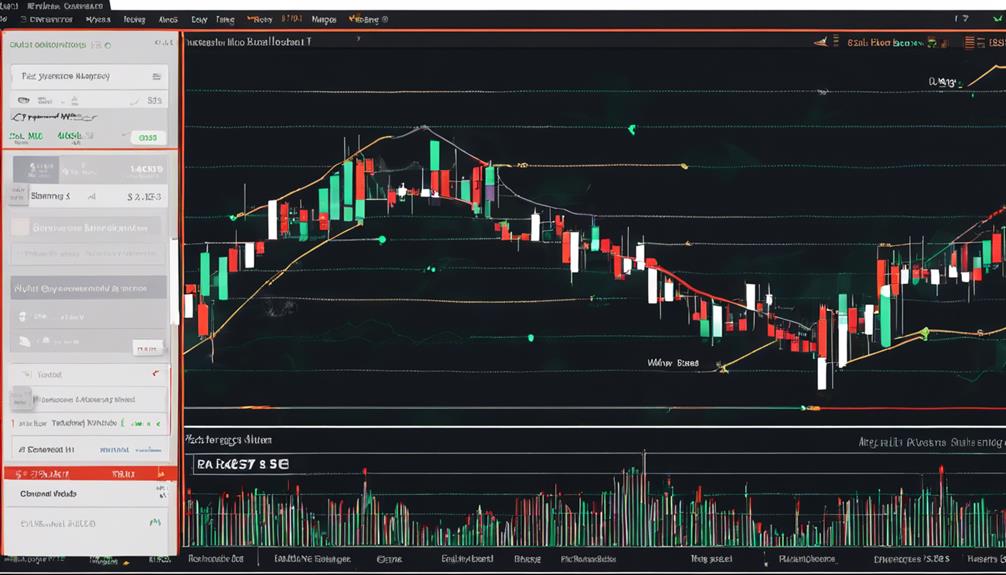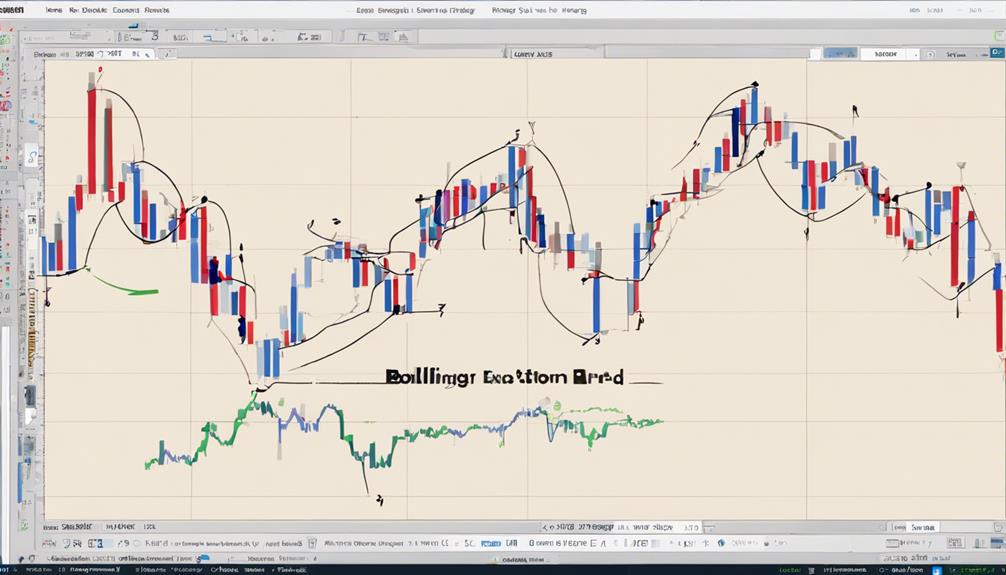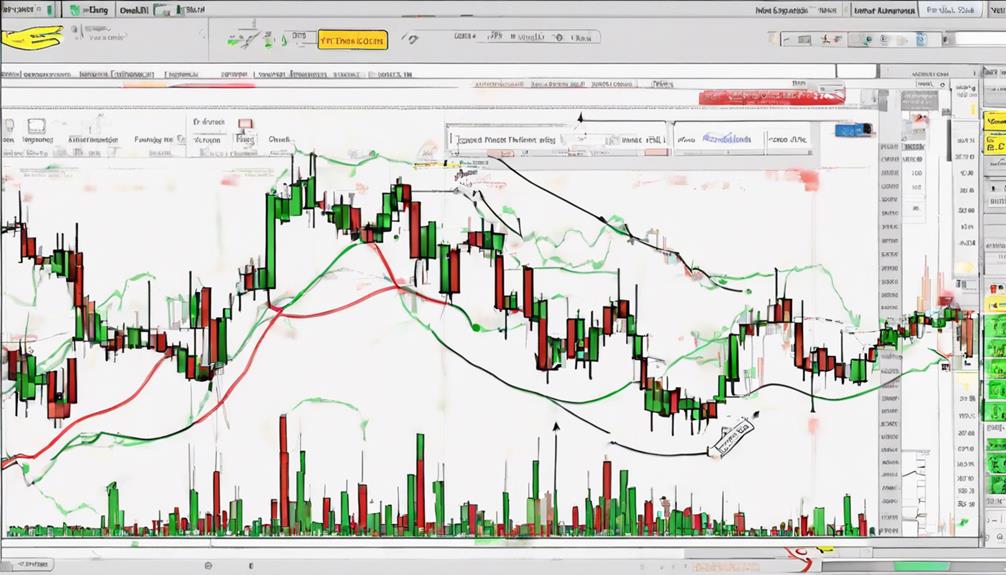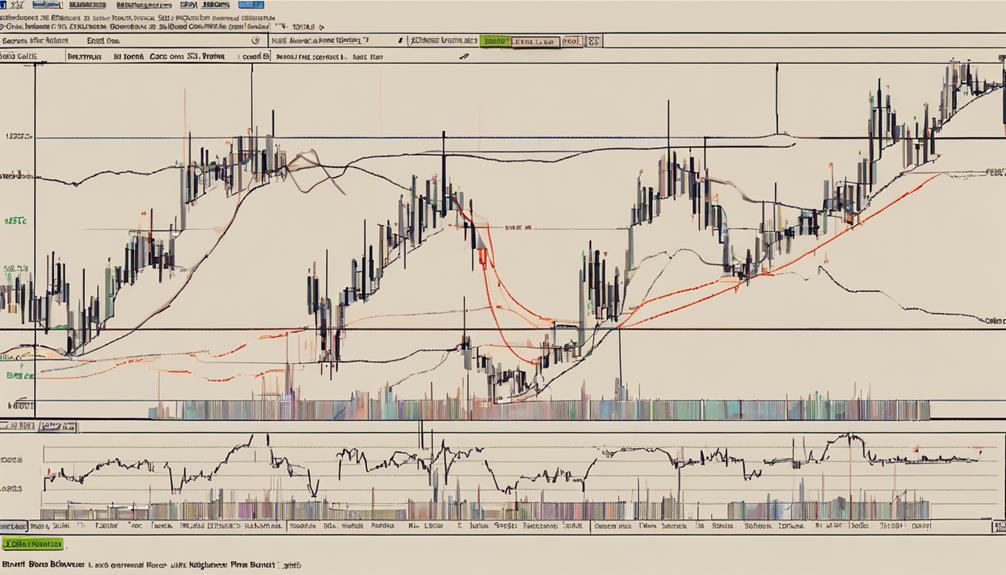Swing trading with Bollinger Bands beckons for a blend of skill and strategy. Unravel the intricacies of the Bollinger Bands Bounce, fine-tune your entries with outer band hooks, and embrace the power of BB squeeze predictions.
But wait, there's more to discover in the realm of swing trading strategies with Bollinger Bands. Explore how to ride the bands and tackle double bottoms with finesse.
As you navigate through these top 5 strategies, a world of potential trading opportunities awaits.
Bollinger Bands Basics for Swing Trading
When beginning to delve into the realm of swing trading, understanding the basics of Bollinger Bands is paramount for devising effective strategies.
In swing trading, Bollinger Bands are instrumental in identifying key levels for trend direction. The middle band serves as a crucial indicator for potential price reversals and entry points. Additionally, the outer bands play a significant role by offering dynamic support and resistance levels.
Breakouts above or below these bands can signal potential trend continuation or reversal, aiding traders in making informed decisions. Furthermore, combining Bollinger Bands with other indicators enhances the analysis process, providing a more comprehensive view for traders to base their strategies on in the dynamic environment of swing trading.
Using Bollinger Bands for Reversals

To effectively utilize Bollinger Bands for identifying potential market reversals, traders can leverage the bands' predictive nature, which stems from the observation that approximately 95% of prices typically fluctuate within the bands.
By combining Bollinger Bands with support and resistance levels, as well as candlestick patterns, traders can enhance their ability to pinpoint optimal entry and exit points for reversal trades.
Understanding price behavior within the bands is crucial for determining the optimal timing to enter or exit trades. This strategic use of Bollinger Bands not only aids in identifying potential reversals but also provides valuable insights into market dynamics, empowering traders to make well-informed decisions based on the signals generated by the bands.
Bollinger Bands for Double Bottoms

Double bottoms, a bullish reversal pattern observed within the lower Bollinger Band, signify two distinct lows formed at similar levels. When analyzing double bottoms in the context of Bollinger Bands, consider the following:
- The first bottom is typically accompanied by high volume, indicating potential buying interest and market support.
- Price retraces back to retest recent lows inside the lower Bollinger Band with a significant drop in volume.
- Traders often view this pattern as a signal for a possible trend reversal to the upside, especially when combined with other technical indicators.
- Double bottoms within Bollinger Bands can offer valuable insights into market dynamics and present potential buying opportunities.
Riding the Bands With Bollinger Bands

After identifying potential buying opportunities within Bollinger Bands through double bottoms, traders can utilize the Riding the Bands strategy to capitalize on price momentum following periods of consolidation.
When employing this strategy, traders avoid selling when prices touch the upper or lower Bollinger Bands and wait for the bands to tighten before anticipating a breakout in price movement.
A key aspect is the confirmation of a potential trend continuation by increased volume during a breakout from the bands.
This approach aims to leverage price momentum after a period of consolidation, helping traders identify entry and exit points based on price action.
How Can I Use Bollinger Bands for Swing Trading Strategies?
Swing traders seeking effective trading strategies often turn to the applications of Bollinger Bands trading. By using these bands, traders can identify potential trading opportunities based on price volatility. Bollinger Bands act as dynamic support and resistance levels, enabling swing traders to establish entry and exit points. Incorporating these bands into a swing trading strategy helps in capturing profitable price swings and making informed trading decisions.
How Can Bollinger Bands Strategies Be Adapted for Swing Trading in Forex Markets?
When it comes to swing trading in Forex markets, utilizing Bollinger Bands strategies can be highly effective. One of the best tips for Forex trading is to adapt these strategies by using longer time frames, combining them with other indicators, and setting clear entry and exit points based on the bands’ signals.
Bollinger Band Squeeze Strategy

The Bollinger Band Squeeze Strategy signifies a period of low volatility in the market, indicating potential breakout opportunities for traders. When the Bollinger Bands contract due to reduced volatility, it suggests an imminent directional price move, offering significant breakout opportunities for swing traders.
Key points to consider for the Bollinger Band Squeeze Strategy include:
- Narrowing Bollinger Bands indicating low volatility.
- Anticipation of a significant price movement post-squeeze.
- Identifying periods of reduced volatility.
- Enhancing trading decisions for swing traders seeking breakout opportunities.
Frequently Asked Questions
What Are the Best Bollinger Band Settings for Swing Trading?
For swing trading, the optimal Bollinger Band settings usually involve a 20-period simple moving average with 2 standard deviations. Adjusting settings based on volatility and timeframe can enhance effectiveness. Experiment with different configurations to find what works best for you.
What Is the Best Strategy for the Bollinger Band?
To maximize Bollinger Bands' effectiveness, combine them with other indicators for confirmation. Set stop-loss and take-profit targets wisely. Understand squeeze and breakout patterns. Customize settings for your timeframe and asset. Enhance strategy by adapting to market conditions.
Which Indicator Is Best With Bollinger Bands?
When trading with Bollinger Bands, the Relative Strength Index (RSI) is commonly paired for additional insights. Setting RSI at 14 periods complements the 20-period Bollinger Bands. The 50.00 RSI level helps identify overbought or oversold conditions for effective analysis.
What Is the Best Moving Average to Use With Bollinger Bands?
When using Bollinger Bands, the 20-period simple moving average is key. It acts as a guide, revealing market trends and support/resistance levels. By combining it with Bollinger Bands, you gain a balanced view for informed trading decisions.
Conclusion
In conclusion, mastering the top 5 Bollinger Bands strategies for swing trading can greatly enhance your trading profits and decision-making in the market. By understanding the basics, utilizing reversals, identifying double bottoms, riding the bands, and employing the squeeze strategy, you can navigate the market with confidence and precision.
Just as a skilled musician uses different notes to create a harmonious melody, a savvy swing trader can use these strategies to orchestrate successful trades.
